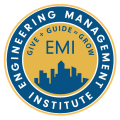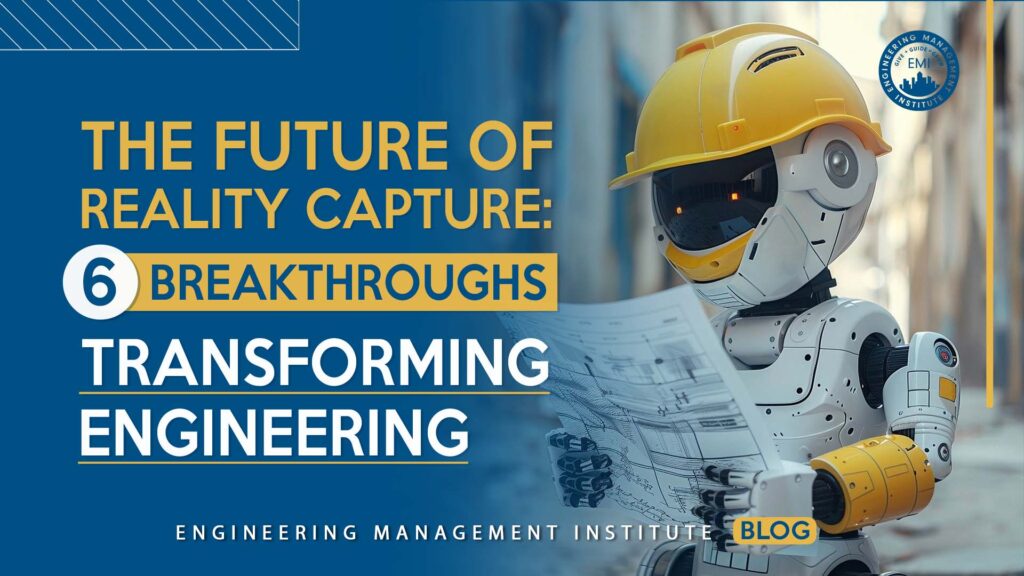I still remember the first time I flew a drone over a job site. It was clunky, the battery barely lasted 15 minutes, and the data took hours to process. Fast-forward to today, and I’m watching AI map structural elements from a point cloud in real time, on my phone. Reality Capture has come a long way, and if you’re in the AEC industry, this is your moment to get ahead of the curve.
Reality Capture (think drones, LiDAR, 3D scanning, and digital twins) isn’t just a cool tech trend. It’s becoming the backbone of how we design, build, and manage infrastructure. And the future? It’s even more exciting.
Here Are 6 Ways Reality Capture Is Evolving Fast, and How You Can Ride the Wave:
3D Laser Scanning Is the New Tape Measure
High-definition 3D laser scanners (LiDAR) are now compact, mobile, and even smartphone-compatible. Whether you’re scanning a tunnel, a historic building, or a tight mechanical room, these tools capture millions of data points in minutes. The result? A detailed point cloud that feeds directly into your BIM model.
Pro tip: Learn how to register and clean point clouds. Tools like Leica Cyclone or Autodesk ReCap are becoming essential.
Drones Are Getting Smarter and More Independent
We’re moving from piloted drones to autonomous fleets. These drones will soon handle routine inspections, detect anomalies, and even trigger alerts, all without human intervention. Imagine a bridge that gets inspected weekly without anyone setting foot on it.
Pro tip: If you’re in civil or structural engineering, get familiar with drone regulations and data interpretation. It’s becoming a core skill.
AI Is Taking Over the Tedious Stuff
Gone are the days of manually modeling every pipe and beam. AI is now doing the heavy lifting, automatically identifying and classifying elements in point clouds. This means faster BIM models, fewer errors, and more time for you to focus on design and strategy.
Pro tip: Start learning how AI integrates with your current tools. Platforms like Autodesk and Bentley Systems are already embedding these features. Start experimenting with AI-enhanced tools like NavVis, ClearEdge3D, or Verity. They’re not just for techies, they’re for time-savers.
Digital Twins Are Becoming Real-Time Mirrors
Digital twins used to be static models. Now, they’re live, breathing systems, fed by sensors, scans, and IoT devices. They’re helping us monitor infrastructure health, simulate performance, and plan maintenance before things go wrong.
Pro tip: Think beyond design. Digital twins are opening doors in operations, asset management, and even sustainability planning. Explore platforms like Bentley iTwin or Autodesk Tandem. They’re bridging the gap between design and operations.
Mixed Reality Is the New Site Visit
Augmented and virtual reality are no longer just for gaming. Engineers are using mixed reality for immersive design reviews, remote inspections, and stakeholder walkthroughs. It’s like being on-site, without the travel.
Pro tip: Try out MR tools like HoloLens or Trimble XR10. They’re not just flashy, they’re functional.
The Long Game: Quantum, Blockchain, and Neural Interfaces
This might sound like sci-fi, but it’s not far off. Quantum computing could soon process massive point clouds in seconds. Blockchain might secure Reality Capture data for legal and regulatory use. And yes, neural interfaces could let us interact with 3D models using our thoughts.
Pro tip: Stay curious. The next decade will reward engineers who are tech-savvy and adaptable. The engineers who thrive in this future will be the ones who embrace change, not resist it.
Key Takeaway: Reality Capture Isn’t Just a Tool, It’s a Career Accelerator
If you’re early in your engineering career, Reality Capture is one of the smartest areas to invest your time. It’s not just about scanning buildings, it’s about transforming how we understand and shape the built environment.
This isn’t just about cool tech. It’s about working smarter, reducing risk, and delivering better outcomes. Whether you’re scanning a bridge, flying a drone, or building a digital twin, you’re not just capturing reality, you’re shaping the future of engineering.
About the Author

Sources/References:
AEC PM Certification
AEC PM Connect
Project Management Accelerator™
Engineering Leadership Accelerator™
Keynote Speaking






